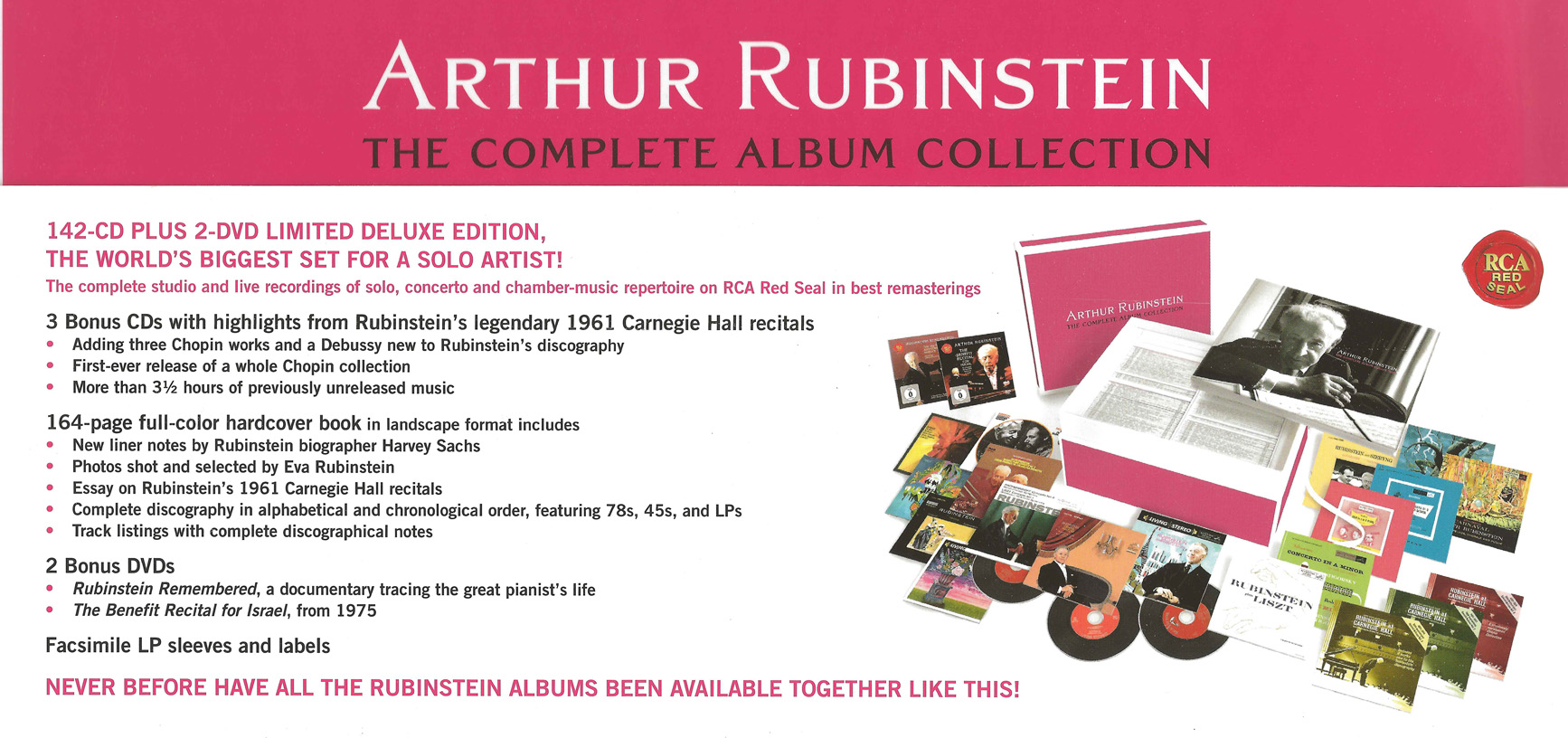Robert Schumann
Cello Concerto in A minor, op.129
Media Review / Listening Diary 2016-05-03
2016-05-03 — Original posting
2016-05-24 — Amended to include recording with Rostropovich/Rozhdestvensky
2016-10-12 — Brushed up for better readability
Table of Contents
- Introduction
- The Recordings
- Robert Schumann (1810 – 1856): Cello Concerto in A minor, op.129
- The Interpretations
Introduction
This is the second one of several posts covering works by Robert Schumann (to appear at irregular intervals). This particular CD is the first of a series of three, in which Isabelle Faust, Jean-Guihen Queyras and Alexander Melnikov perform the three piano trios by Robert Schumann, one trio per CD, each CD also including one of the three concertos for solo instrument and orchestra by that same composer. Being a fan of all three of these artists, I could not resist buying the entire set.
The Recordings
In this short posting, I’ll just deal with the one CD (No.3) from the set with Jean-Guihen Queyras playing Cello Concerto in A minor, op.129, by Robert Schumann. The CD includes the Trio for Piano, Violin and Cello No.1 in D minor, op.63. This will be dealt with in a separate posting featuring a comparison with other recordings. For a discussion of the recording with Isabelle Faust playing Violin Concerto in D minor by Robert Schumann (WoO 1) see my earlier post.
On CD, I have one other recording of that concerto, with Gregor Piatigorsky (1903 – 1976), see below. This is a CD that includes the Cello Sonata No.1 in E minor, op.34 by Johannes Brahms (1833 – 1897), accompanied by Arthur Rubinstein which will also be discussed in a separate posting. That CD is part of the set “Arthur Rubinstein — The Complete Album Collection” (142 CDs + 2 DVDs), see below.
Shortly after completing the first version of this posting, I added another recording to my collection, which I can hardly dismiss in this context: one of Mstislav Rostropovich‘s recordings that I also had on LP.
Jean-Guihen Queyras, Pablo Heras-Casado (2014)
Schumann: Cello Concerto in A minor, op.129; Piano Trio No.1 in D minor, op.63
Jean-Guihen Queyras, Pablo Heras-Casado / Freiburg Baroque Orchestra (2014) /
Isabelle Faust, Jean-Guihen Queyras, Alexander Melnikov
harmonia mundi France HMC 902197 (CD + DVD, stereo); ℗ 2016
Booklet: 24 pp., fr/en/de

Gregor Piatigorsky, Sir John Barbirolli (1934) — Arthur Rubinstein Collection, CD #45
Arthur Rubinstein — The Complete Album Collection
Schumann: Cello Concerto in A minor, op.129; Brahms: Cello Sonata No.1 in E minor, op.34
Gregor Piatigorsky, Sir John Barbirolli, London Philharmonic Orchestra (1934) /
Gregor Piatigorsky, Arthur Rubinstein (1936)
SONY Classical 88691936912 (142 CDs / 2 DVDs, mono / stereo); ℗ / © 2011
Documentation 162 pp., liner notes on CD sleeve

Mstislav Rostropovich, Gennadi Rozhdestvensky (1961)
Schumann: Piano Concerto in A minor, op.54; Cello Concerto in A minor, op.129
Mstislav Rostropovich, Gennadi Rozhdestvensky, Leningrad Philharmonic Orchestra (1961)
Martha Argerich, Mstislav Rostropovich, National Symphony Orchestra Washington
DG 449 100-2 (CD, stereo); ℗ 1961

Robert Schumann (1810 – 1856): Cello Concerto in A minor, op.129
Robert Schumann (1810 – 1856) composed his Cello Concerto in A minor, op.129 in October 1850, a mere 3 years before the violin concerto. With this, it also belongs to Schumann’s last productive period. It features three movements, all to be played attacca:
- Nicht zu schnell (not too fast), 4/4 (1/4 = 130) —
- Langsam (slow), 4/4 (1/4 = 63) — Schneller (faster) —
- Sehr Lebhaft (very lively), 2/4 (1/4 = 114) — Schneller (faster).
History of the Composition
This is just a short summary, a minimal excerpt from the relevant Wikipedia article (see there for additional information). The concerto was never performed (definitely not in public) during Schumann’s lifetime. Only in 1860 it premiered in Leipzig, on the occasion of the composer’s 50th anniversary. Almost like the violin concerto, the cello concerto was almost forgotten for decades. Luckily, this has changed during the 20th century. Still, while the concerto is full of “inner beauty”, at least in the outer movements it is not as easy to “get into” as, e.g., the piano concerto (with which it shares the tonality a minor).
The Interpretations
Given the difference in age and in recording technique, this can hardly be a fair comparison. So, please take the text below as independent descriptions.
Gregor Piatigorsky, Sir John Barbirolli, London Philharmonic Orchestra (1934)
Many regard Gregor Piatigorsky (1903 – 1976) one of the—if not the—greatest cellist(s) of all time. This alone makes this recording from 1934 a valuable historic document. John Barbirolli (1899 – 1970, Sir John Barbirolli after he was knighted in 1949) conducts the London Philharmonic Orchestra. The LPO now is one of London’s big and prominent orchestras. The conductors Sir Thomas Beecham and Malcolm Sargent founded it in 1932. Even though it was only in its third year at the time of this recording, in 1934, it already was a good orchestra.
I. Nicht zu schnell
Duration: 11’16”
As expected for a mono recording from 1934, the sound qualities of this CD are rather modest. The cello prevails in foreground, the orchestra is rarely ever louder than the solo cello. Also, the frequency range is limited, and the dynamics appear heavily compressed. One almost needs to guess when Piatigorsky plays pp, p, mf, etc. On the other hand, the original recording has been restored quite well, there is no substantial hiss or other noise.
The dominant feature—as mentioned—is the solo part; Piatigorsky plays with excellent intonation and clear articulation. As expected, he uses permanent, fairly rapid/nervous vibrato. But I must say that the vibrato is not hurting too much: it is fast, but not so strong in amplitude. Piatigorsky uses rather broad articulation, tends towards portato where the score asks for staccato; real staccato occurs mainly where Schumann writes marcato. Also, small-scale phrasing and agogics are very limited. Piatigorsky focuses on the big phrases, and he makes several deliberate changes in the articulation (slurs). fp and sf markings are sometimes hardly noticeable (this could in parts be due to technical recording limitations).
The quality of the orchestra is hard to judge, as it all comes from the same spot “behind the cello”, and it often sounds as if heard through a tube. The one hiccup I noted is bad coordination some 18 bars from the end of the movement, where the strings (violin 2, viola, cello) play triplets “together” with the woodwinds. The other “feature” that I noted is in the musical flow / tempo management, which sometimes appears a bit crude, in that some orchestra tutti are distinctly faster than sections with solo (louder = faster??).
II. Langsam — Schneller
Duration: 4’01”
As most of the movement is a serene song for the cello, with the orchestra merely accompanying, this part is far less problematic. Piatigorsky can play out his nice, intense cantando. The Schneller part is an intense, dramatic (but short) recitativo.
III. Sehr Lebhaft — Schneller
Duration: 9’24”
The tempo is pushed, feels too fast (to me): Lebhaft is the equivalent to Vivace, not Presto. The solo part is virtuosic, relatively clear, but fairly uniform in articulation. Piatigorsky tends to use broad(er) articulation, and largely the same, dense tone (with vibrato almost everywhere, of course). The duration (1’30” longer than Jean-Guihen Queyras) is deceptive: this performance is substantially faster, but Piatigorsky adds a 2’15” cadenza prior to the In Tempo annotation at the beginning of the Coda. The cadenza itself is virtuosic, quite good as such (loosely based on themes from the movement). However, the score does not ask for a cadenza.
| Overall Duration: | 24’38” |
| Rating: | 3.3 (3 / 4 / 3) |
| Recommendation: | Can’t be compared to recent recordings, but regardless of its performance and recording qualities, this will be regarded a landmark historical recording. |
Jean-Guihen Queyras, Pablo Heras-Casado / Freiburg Baroque Orchestra (2014)
First and foremost: this recording comes in two forms: there is also a DVD with a live recording from the Berliner Philharmonie: very nice to watch and experience, to see Jean-Guihen Queyras’ unpretentious appearance and playing, his likable acting (also around the little mishap before the concerto actually starts), as well as the Freiburg Baroque Orchestra under Pablo Heras-Casado in live action! Needless to say: the sound in the studio recording for the CD is substantially better, features better transparency, more direct dynamics, plasticity and balance. However, the two media are complementing each other nicely.
The sleeve notes mention that the recording was made at a’ = 440Hz. Jean-Guihen Queyras is playing a cello by Gioffredo Nappa, from 1696. For the general sound & orchestral qualities of this recording see also the posting on Schumann’s Violin Concerto. Note: the following remarks refer to the CD version, not to the DVD.
I. Nicht zu schnell
Duration: 10’41”
From a pure recording point-of-view, this is so much better, of course: transparent, clear, with full dynamics. Apart from this obvious fact, the flow is vastly better, very natural / harmonic. It features agogics, Klangrede, the articulation is light and detailed. The dynamics are vivid and clear: sf and fp marks are all audible, but not excessive. And of course, the vibrato treatment is superb, absolutely on a par with that of Isabelle Faust! Overall: the recording / performance is vastly more natural, and more “speaking”. Interestingly, Jean-Guihen Queyras uses more portamento than Piatigorsky—but in a natural, inconspicuous way.
II. Langsam — Schneller
Duration: 4’04”
It’s a miracle how Jean-Guihen Queyras manages to play with virtually no vibrato (not always, but for a substantial portion of a phrase)—and yet so extremely expressive, as if the non-vibrato permitted a more direct view onto the musical substance! And it never, ever sounds crude, raw. To the contrary: the bleak, flageolet-like tones amplify that feeling of loneliness and despair, sadness (and yet, beauty!). The most intense, if not scary, disturbing, moment is in bars 10 – 13, where the music (and the heart) appears to come to a halt / dead point, and Schumann takes a fresh start after a shocking moment, in order to continue.
III. Sehr Lebhaft — Schneller
Duration: 7’55”
Jean-Guihen Queyras uses a much broader spectrum in articulation and tonal quality than Piatigorsky. He frequently / often uses flute- or flageolet-like tones (typically without any vibrato), but also flageolet and empty strings, where appropriate. At the same time, he can also use “conventional” articulation, particularly in the lowest register. With all this, he avoids any uniformity that makes Piatigorsky’s playing sound like “sawing” at times in this movement (at least, in comparison). The tempo is right here: it is never pushed, allowing for proper articulation & excellent coordination with the orchestra. Also, the dynamics are so much more lively than in the historic recording. This can’t be just because of the advances in recording technique! This beats the Piatigorsky recording by far.
| Overall Duration: | 22’40” |
| Rating: | 5.0 (5 / 5 / 5) |
| Recommendation: | Yes, definitely, and without hesitation — go for it! |
Mstislav Rostropovich, Gennadi Rozhdestvensky, Leningrad Philharmonic Orchestra (1961)
This is one of several recordings of this concerto that Mstislav Rostropovich (1927 – 2007) made. This one is with maestro Gennadi Rozhdestvensky (1931 – 2018) conducting the Leningrad Philharmonic Orchestra. That recording was made around 1961. Without doubt, Mstislav Rostropovich was one of the great cellists of the last century, which gives this recording historic value. Nevertheless, aesthetics have evolved over the past 55 years. In my personal opinion, Rostropovich’s interpretation now has a hard stand against recent recordings, such as the one above. I did not do a full comparison again, so these notes are rather short.
I. Nicht zu schnell
Duration: 12’17”
Rostropovich’s vibrato is stronger and faster than Piatigorsky’s, and it’s omnipresent. But my main objection here is in the tempo, which is too slow: the annotation does not say “nicht schnell” (“not fast”), but rather “nicht zu schnell“, i.e., “not too fast”. The tempo here is not fast at all. It often sounds heavy (especially in the orchestra), the music becomes static.
Sure, it is technically excellent playing, but often also too expressive. Rostropovich has a tendency to “blow up” phrases with an excessive crescendo towards the end. This may be a consequence of his excessive, omnipresent vibrato. In Jean-Guihen Queyras’ approach with limited, general vibrato, a subtle increase in vibrato strength / intensity is often enough to highlight the climax of a phrase. Rostropovich sure has no problem with intonation; yet, I personally would occasionally prefer a slightly different intonation. Note that on string instruments, there is (often) no strictly “correct” intonation, but it is up to the artists to decide, e.g., how much lead tone characteristics they want to give in ascending half-tone intervals.
II. Langsam — Schneller
Duration: 5’03”
This is not just slow, but very slow—too slow in my opinion. Often, it is just static, the melody extremely stretched out. Of course, the vibrato is again everywhere, which also adds some monotony. One interesting aspect is in bars 10 – 13, which feels rather scary, desperate in the interpretations above. Here, however, at the given slow pace, the artist takes a completely different approach: that moment is not scary! In Rostropovich’s interpretation, the tempo momentarily picks up, like an ephemeral moment of hope and joy that instantly returns to the longing, melancholic atmosphere of the movement.
III. Sehr Lebhaft — Schneller
Duration: 8’16”
To me, also this movement feels too slow and often static: Sehr lebhaft (very vivid) to me requires a faster tempo.
| Overall Duration: | 25’35” |
| Rating: | 3.3 (3 / 4 / 3) |
| Recommendation: | If you are a “Rostropovich follower”, you may want to have this recording anyway. I can’t really recommend this “for general consumption” any longer. In terms of sound quality, this recording is of course vastly superior to Piatigorsky’s, so if you are primarily looking for a traditional recording, this one may be for you. |
Addendum / Video Trailer
harmonia mundi have published a video trailer (sorry, includes commercial) for the CD/DVD recording above, with Jean-Guihen Queyras / Pablo Heras-Casado.
Listening Diary Posts, Overview









